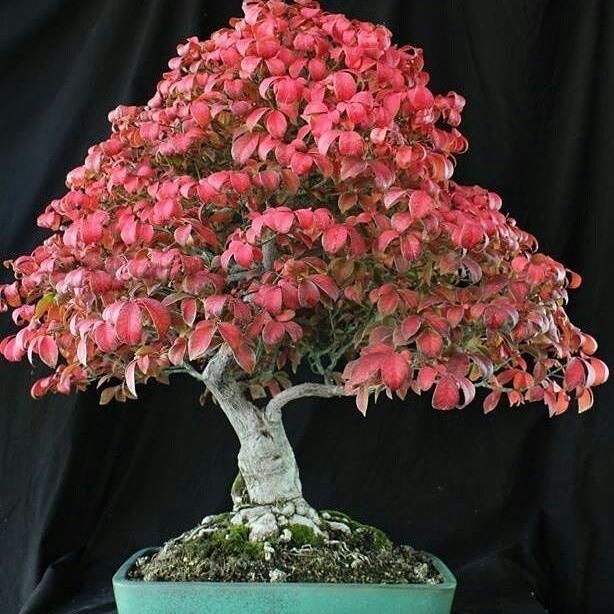Newbie bonsai practitioners tend to believe that it is through re-potting how bonsai trees are kept small. But this is not the true purpose of re-potting.
Instead, the major goal achieved through re-potting the small trees is to ensure that the plants will get access to all the essential nutrients they need to flourish.
If not transplanted regularly, a bonsai tree can easily become pot-bound and literally starve to death without being able to reach new, fresh nutrients available in the soil. With this in mind, choosing the best bonsai tree repotting kits is crucial.
The Secret of Bonsai Repotting: Timing
Repotting your bonsai takes patience and perfect timing – much like any other aspect of your bonsai journey.
Instead of repotting your miniature tree on a schedule, you need to learn how to understand the language of the plant. For this purpose, check the root system of your bonsai at the beginning of the spring season annually.
Simply remove the tree from the pot and inspect if the roots are circled around the root system. If so, then it is time for repotting.
Nevertheless, careful grooming and trimming of the roots is a must, for if not corrected, the roots will continue to grow in a circle around the root system, even when repotted, like highlighted in the presentation Technical Tree Solutions: Correcting Circling or Girdling Tree Roots.
In the case, you notice that the roots are still in the soil and have not been compacted to the point of encircling the root system, then wait until the start of the next season to check if the right time for repotting has come.
The reason why bonsai trees are best to be repotted in early spring is that this is the period when the trees are still dormant yet on the very brink of the new growth cycle. Thus, repotting during this favorable period will reduce the stress and damage caused to your miniature tree. As a result, the root system will repair itself very soon, just in time for new, healthy growth to be established.
Keep in mind that your bonsai tree can continue its dormancy due to environmental conditions that prevent growth such as temperatures that are too high or too low. This phenomenon is known as “eco-dormancy,” as highlighted by the science and horticulture specialists of Michigan State University.
Video by: Atlantic – How Do Trees Know It’s Spring?
Source: youtube.com
Apart from timing, the two most important factors for repotting a bonsai with best results upon completion include using highest quality bonsai soil and highest quality bonsai pots.
As pinpointed by Mississippi State University experts, compacted soil blocks root development. Bonsai pots that are made of poor-quality materials and/or come in the wrong size can further exuberate the health of your bonsai’s roots. A plant that doesn’t possess a healthy, vital root system is destined to suffer and even die off.
Video by: 7activestudio – ROOT SYSTEM
Source: youtube.com
Tools you Need for the Perfect Bonsai Repotting Kit

When searching for the best bonsai tree repotting kits, you can either assemble yours from scratch or you can opt for readily-available ones. Regardless of the option you choose, you need to distinguish the usage of the different tools needed for repotting your bonsai.
Root rakes
A root rake is necessary for loosening the layers of bonsai soil.
Most noteworthy, it is through the flat edge of a rate rake that you will be able to strengthen the bonsai tree’s structure by carefully packing the soil between the roots.
It is also by using a root rake how you will remove the tree from its pot in the best possible way. Opting for low-quality root rakes can easily cause damage to the root system, so choose wisely.
Chopsticks
Chopsticks are perfectly-suited when it comes to removing old soil. Old soil lacks the vital elements a bonsai tree needs to thrive. Nonetheless, the structure of old soil usually fails to anchor the roots well.
When working with chopsticks during the process of repotting your bonsai, make sure to begin from the sides and the very bottom as not to harm the roots.
Chopsticks are then again needed after repotting your bonsai tree to assist you in working the soil as to create air pockets allowing the root system to breathe and develop properly.
Scissors
Pruning the roots is an essential part of repotting. Because of this, high-quality scissors are required.
It is best to use thinner yet sharp scissors for trimming the delicate roots. Also, do not remove more than approximately 30% of the roots.
Wire cutters
In most cases, a bonsai tree is anchored to its pot with the use of wire. Because of this, wire cutters are handy for cutting the wire when repotting.
Furthermore, it is highly advisable that you take advantage of a piece of mesh to cover the drainage holes of the pot before executing the final steps of repotting. Therefore, the wire is also needed to help in holding the mesh in place.
The Wrap-Up

As Confucius wisely stated, it is on diligence that the expectations of life depend on. Therefore, a mechanic who wants to perfect his work “must first sharpen his tools.”
In a similar manner, those enchanted by and involved in the ancient practice of cultivating small trees in small containers must consider taking advantage of nothing less but the best bonsai repotting kits. For a great bonsai, tree gardener knows fair well that it is hard, if possible at all, to outperform improper and/or low-quality tools.


